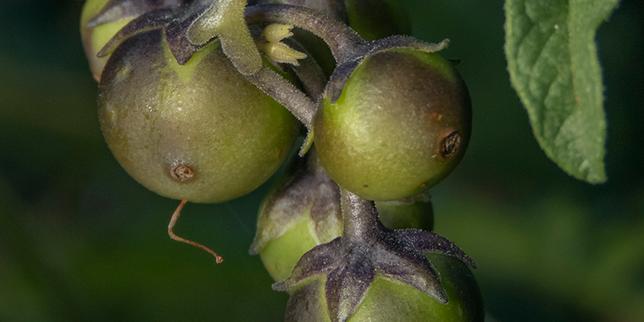

In a fascinating revelation from the world of botany, recent research has uncovered a significant evolutionary connection between two of our most beloved vegetables: the potato and the tomato. This groundbreaking study, published in the renowned journal “Cell,” offers a glimpse into the distant past, tracing back to a time when these two plant species shared a common ancestor.
The origin of this research lies in the collaborative efforts of an international team of scientists dedicated to understanding the ancient genealogy of the potato. Their journey has led to a remarkable discovery that the tuber-forming ability of potatoes can be traced back to a hybridization event with a wild tomato ancestor approximately nine million years ago.
Our culinary experiences with potatoes and tomatoes today might give the impression that they are distinctly different entities. However, this study highlights a deep-rooted kinship in their evolutionary paths. It all began during a period when diverging plant species occasionally interbred, giving rise to novel genetic configurations. This ancient hybridization brought together genetic elements that likely sparked the formation of tubers—an adaptation that has profound implications for the survival and proliferation of the potato across the globe.
The botanical odyssey that resulted in the potato’s unique characteristics speaks to the intricate processes of natural selection and adaptation. Over millennia, the potato’s tubers became a vital food source, offering a starchy reserve that could sustain life through diverse environments and climates. As such, it evolved from its humble origins in the Andes mountains of South America to become a staple crop worldwide, nourishing millions.
This research not only enriches our understanding of plant evolution but also underscores the importance of genetic diversity and hybrid vigor in the natural world. Such findings are crucial in the context of modern agriculture, where preserving genetic resources can be key to developing resilient and sustainable crops in the face of climate change and other environmental challenges.
Understanding the biology of potatoes and tomatoes goes beyond mere academic curiosity; it encapsulates an appreciation for nature’s ability to adapt and thrive. By examining the interconnectedness of life forms, we acknowledge the adaptive strategies that ensure the survival of plant species through complex and changing ecosystems.
In looking back through time at these dynamic evolutionary processes, we also contemplate the future of agriculture and food security. The continued study of these relationships may offer insights into breeding techniques that enhance crop yield and resistance, securing a stable food supply for future generations.
This discovery further exemplifies the remarkable tales hidden within the genes of plants, stories that highlight the interrelatedness of all living things on Earth. As we deepen our understanding of these ancient connections, we are reminded of our role as stewards of the environment, tasked with preserving the delicate balance of life on our planet.
The story of the potato and tomato is but one chapter in the vast narrative of evolutionary biology. It encourages curiosity, respect, and a profound appreciation for life’s intricate tapestry, woven over millions of years. This journey through time not only enriches our scientific knowledge but also inspires a contemplative reflection on the natural world and our place within it.
Source: {link}
